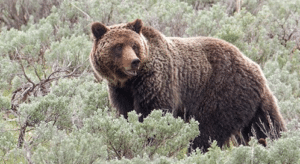The California Endangered Species Act (which acts independently of the federal Endangered Species Act) gives the state Fish and Game Commission authority to list native California species as endangered only when they meet specific criteria. First among these is an actual presence in the state. The gray wolf listing cannot meet even this most basic criterion, as it was based on a single wolf that occasionally crosses the border from Oregon, meanders around California briefly, and then wanders back home.
Second, the CESA covers native species only. The gray wolves covered by this listing are originally from Canada and represent a subspecies that was never historically present in California. Finally, although the CESA is concerned with native California species, it must consider a potentially listed species in the context of its population in other states. Here, the Commission ignored healthy wolf populations in Oregon and elsewhere. In fact, those thriving wolf packs have reached the point that the federal government is considering removing the gray wolf from the federal endangered species list.
The listing is not only bad law, it is bad policy. Gray wolves create dangers for Northern California ranchers, farmers, and their local economies. If gray wolves begin to establish themselves after a long absence from California, regulators should be working with landowners on balanced policies that can protect sheep, cattle, and people with minimal harm to wolves. Instead, the ‘endangered’ listing makes it next to impossible for landowners to get permits even to remove a wolf that is threatening their animals. Even state officials would run into red tape if they were to try to capture or kill a wolf. By wrongly safeguarding a non-native wolf species, the state is endangering native animals that are the proper subject of CESA protections.
What’s At Stake?
- The California Fish and Game Commission has neglected sound scientific analysis, undermined sensible wildlife protections — and violated state law — by unjustifiably adding the gray wolf to the state’s list of “endangered” species.
- The listing harms ranchers and farmers, because of the obstacles it creates to reasonable measures to ward off wolf attacks on livestock and domestic animals.









